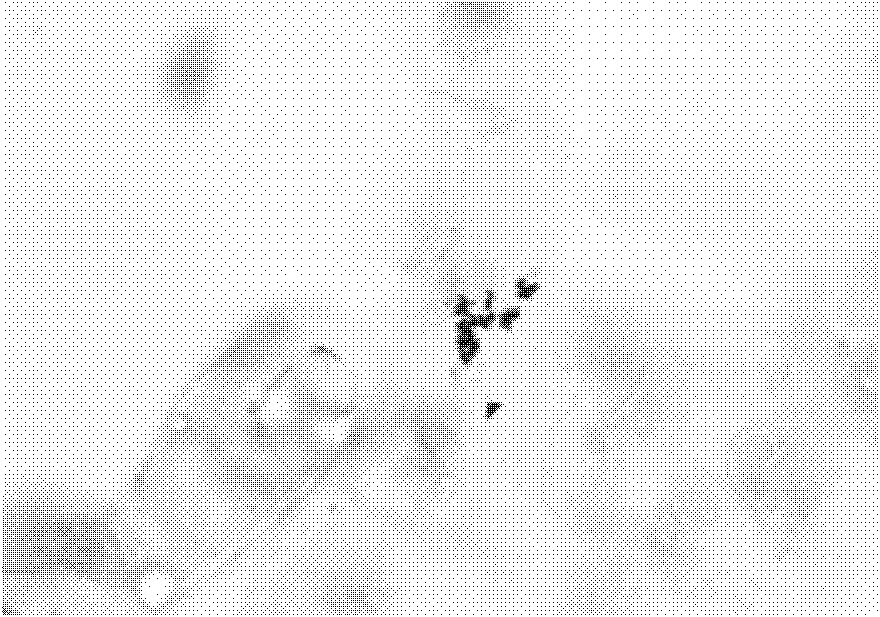Seaweed breeding method based on induction polyploid gametocyte
A gametophyte and polyploid technology, which is applied in the field of kelp breeding based on induced polyploid gametophytes to achieve the effects of improving economic traits, enhancing physiological activities and increasing gene content
- Summary
- Abstract
- Description
- Claims
- Application Information
AI Technical Summary
Problems solved by technology
Method used
Image
Examples
Embodiment Construction
[0012] The present invention is further illustrated by specific examples below.
[0013] The experimental material of this embodiment is kelp female gametophyte cells. The kelp with sporangia is cleaned with disinfected seawater, dried in the shade for 3-4 hours, and then placed in low-temperature disinfected seawater to release the spores. Filter the spore water to collect the spores on the glass slide. The collected spores are cultured at a temperature of 15-20℃, with a light intensity of about 1500-2000lx, and a light time of 10h / day. The culture medium is filtered and disinfected seawater, plus nutrient inorganic nitrogen (N content is 4ppm) and inorganic phosphorus (P content) Is 0.4ppm). After the spores are attached to the glass slide, after 5-7 days of culture, the male and female gametophytes can be clearly distinguished. Female gametophytes are single-celled, with larger cells and darker pigments; male gametophytes are multicellular individuals with smaller cells and ...
PUM
 Login to View More
Login to View More Abstract
Description
Claims
Application Information
 Login to View More
Login to View More - R&D
- Intellectual Property
- Life Sciences
- Materials
- Tech Scout
- Unparalleled Data Quality
- Higher Quality Content
- 60% Fewer Hallucinations
Browse by: Latest US Patents, China's latest patents, Technical Efficacy Thesaurus, Application Domain, Technology Topic, Popular Technical Reports.
© 2025 PatSnap. All rights reserved.Legal|Privacy policy|Modern Slavery Act Transparency Statement|Sitemap|About US| Contact US: help@patsnap.com

